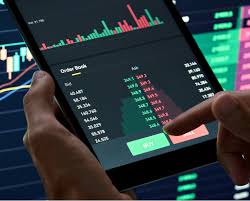Understanding Crypto Trading Volume Tools Essential Insights

Mastering Crypto Trading Volume Tools: A Comprehensive Guide
In the fast-paced world of cryptocurrency trading, understanding the movement of volumes is crucial for making informed investment decisions. Numerous tools have emerged to assist traders in analyzing trading volumes, offering insights into market trends, sentiment, and potential price movements. If you’re looking to enhance your trading strategy, you might want to Crypto Trading Volume Tools click here to explore further resources. In this article, we’ll delve into what crypto trading volume tools are, how they work, and which ones can be beneficial in your trading journey.
What is Trading Volume?
Trading volume refers to the total quantity of an asset that has changed hands during a specific time period. In the context of cryptocurrency, it measures the number of coins or tokens that were traded on a particular exchange within a defined period, which could be hourly, daily, or weekly. High trading volume often indicates a strong interest in a particular asset, while low volume may suggest decreased interest or a lack of liquidity.
Importance of Trading Volume in Crypto Trading
Understanding trading volume is key for several reasons:
1. **Market Sentiment**: High volume during a price increase typically indicates bullish sentiment, while high volume during a price decline can signal bearish sentiment.
2. **Liquidity**: Higher volume generally leads to better liquidity, meaning traders can execute their trades more easily without significantly affecting the market price.
3. **Trend Confirmation**: Many traders use volume as a confirming signal for trends. For instance, if an asset’s price rises but the volume does not increase, it might suggest that the trend is weak.
4. **Support and Resistance Levels**: Volume can help identify these critical market levels. A price level with high traded volume is often a strong support or resistance level.
Common Crypto Trading Volume Tools
Numerous tools are available for traders looking to analyze crypto trading volume. Below are some of the most essential platforms and indicators:
1. Volume Charts
Most cryptocurrency exchanges provide basic volume charts that display the total trade volume over time. Traders can analyze these charts to observe patterns and trends. For example, traders often look for spikes in volume that might indicate potential price reversals or breakouts.
2. On-Balance Volume (OBV)
On-Balance Volume is a technical indicator that uses volume flow to predict changes in stock price. It assumes that volume precedes price movement. If the price is increasing and OBV is also rising, it reinforces the strength of the trend. Conversely, if the price is rising but OBV is declining, it may suggest a weakening trend.

3. Volume Weighted Average Price (VWAP)
VWAP is another key tool for traders. It helps in understanding the average price a security has traded at throughout the day, based on both volume and price. VWAP is often used as a trading benchmark, providing insights into the current direction of an asset.
4. Accumulation/Distribution Line (A/D Line)
The Accumulation/Distribution line combines price and volume to indicate how much of an asset is being accumulated or distributed over time. A rising A/D line suggests accumulation, while a falling line indicates distribution. This can help traders make better-informed decisions based on market dynamics.
5. Cryptoeconomics Analytics Platforms
Several analytics platforms also offer comprehensive insights into trading volumes and other metrics across multiple exchanges. Platforms like Glassnode, CoinMetrics, and CryptoQuant provide valuable data that can help traders keep track of on-chain metrics, network activity, and social sentiment related to trading volumes.
Tips for Utilizing Trading Volume Tools
To effectively leverage trading volume tools, traders should consider the following tips:
1. **Use Multiple Indicators**: Relying on a single indicator can be misleading. It’s crucial to combine volume analysis with other technical indicators for a holistic view.
2. **Context Matters**: Always consider the context of trading volume. For instance, a high volume during a downward trend might indicate panic selling, rather than a bullish reversal.
3. **Monitor News and Events**: Major news events can significantly impact trading volume. Be aware of scheduled events that may cause volume spikes, such as regulatory announcements or major product launches.
4. **Backtesting Strategies**: Before applying volume-based strategies in live trading, consider backtesting them on historical data to gauge their effectiveness in different market conditions.
5. **Stay Informed**: The cryptocurrency market is constantly evolving. Stay updated on the latest market trends, tools, and techniques to make informed decisions.
Conclusion
Crypto trading volume tools play an essential role in the analysis and execution of trading strategies. Understanding the significance of trading volumes, along with mastering various tools, can empower traders to make informed decisions and enhance their profitability. By incorporating these tools into your trading arsenal, you can navigate the complexities of the crypto market with greater confidence and insight.
As the crypto landscape continues to evolve, staying agile and informed is key to successful trading. Always seek continuous learning opportunities, whether through research, online forums, or courses, to refine your skills.
With the right tools and knowledge, you can leverage trading volume to your advantage, helping you to make more strategic and informed trading choices in the ever-changing world of cryptocurrency.
: fezonline.net | Tags:
Vous pouvez suivre les prochains commentaires à cet article grâce au flux RSS 2.0

 Service commercial : 01 80 88 43 02
Service commercial : 01 80 88 43 02
Répondre
Désolé vous devez être connecté pour publier un commentaire.